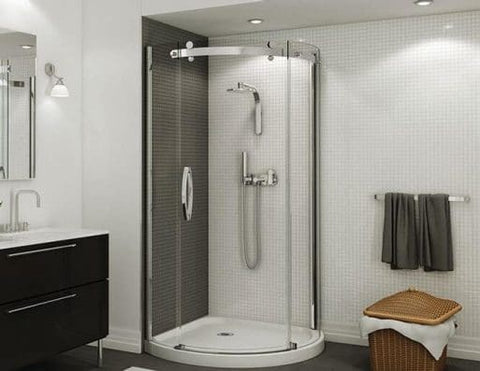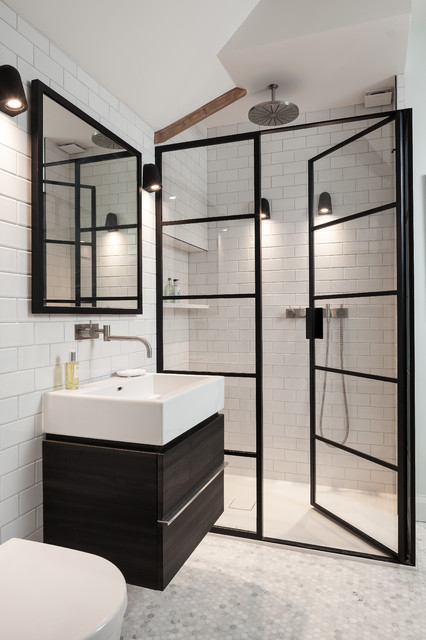The article in the next paragraphs about How to Install a Freestand is pretty much interesting. Read it for yourself and see what you think of it.

An effective shower setup needs cautious planning and a lot of job. Most of the times, you will certainly require to do 3 types of tasks: framing walls, installing the plumbing, and finishing walls.
Preparation
Firstly, you should choose the type of shower that you desire to mount. It is important to identify whether the picked shower can handling specific systems as well as can control a risk-free level of water through the boiler. Most shower devices nowadays are designed to be adaptable to various water stress (such as kept hot water and cold keys).
It is additionally crucial to take into account the water pressure and also the preparation of the piping as well as drainage for the shower
Various Kinds Of Shower Units
- Push-on Mixer: The hose and also spray parts of the push-on mixer shower system can be linked to the bath tap based on your demand, and the water temperature level can be changed via the faucets. Push-on mixers are cheap as well as extremely basic to install. Nonetheless, although the hose link is easy, it is easily removed. Additionally, it is bothersome to adjust the temperature level.
- Bath/Shower Mixer: The hose pipe and spray of this kind of shower are combined with a bathroom mixer tap, and also the temperature can be readjusted with the bathroom taps. It is a really low-cost option as well as no extra plumbing is included. However, the bath/shower mixers also deal with inconvenient temperature level control options.
- Handbook Mixer: The hose as well as spray of a hand-operated mixer shower system belong of the wall system and the hot and cold water products are connected to a solitary valve The temperature and also pressure of the water are managed through either one or a range of handles (in more costly showers). Although temperature level control is much easier in hands-on mixer kinds, they are much more costly than the formerly discussed mixers. They additionally require extra plumbing of cold and hot water supply pipes.
- Thermostatic Mixer: The pipe and spray of this shower type belong of the wall surface unit as well as the cold and hot water supplies are connected to a solitary shutoff here too. It is total with an integrated stabiliser to self-adjust the water temperature and to avoid it from coming to be too hot. One of the greatest benefits of a thermostatic mixer shower kind includes convenient temperature control. Nevertheless, it is one of the most pricey of the different mixer choices.
- Power Shower: A power shower is a single system having an effective electrical pump that is capable of altering both the water pressure as well as temperature level. This sort of shower can be fitted if there is water supply from a cold water cistern as well as a warm water cyndrical tube. A power shower makes the change of both pressure and temperature simple. On the other hand, it is unsuitable for water heated directly by the shower or where the water is supplied by a combination boiler under mains pressure.
- Electric Shower: An electrical shower is plumbed right into a keys cold water supply and also it warms the water electrically. It is necessary to keep in mind that for this shower kind to be mounted, the keys stress requires to be at the very least 0.7 kg/sq centimeters (10lb/sq in). The device permits the temperature level and also stress to be readjusted via a handle. Versions with temperature level stabilisers are much better as they continue to be untouched by various other faucets in other places being used within the family. A significant disadvantage of electric showers is that the control knob only allows for the option of high temperatures at much less stress, or reduced temperature levels at a higher pressure. This is problematic in the winter season when the spray is often weak and the keys water is cooler. Nonetheless, this issue is taken on in some versions which are readily available with a winter/summer setup.
Technique
Depending on the sort of shower you desire to set up, the shower head should either be fitted in order to avoid its contact with the water in the bathroom listed below or the base tray, or it should have a check valve.
Prior to beginning, it is a good idea to note the positions of the shower head and control, and also to prepare the pipe-work included. Additionally, the water drainage system to eliminate the waste water will require to be prepared. Both positions of the wire course as well as the shower switch will certainly likewise need to be considered if an immediate or electric shower device is being set up.
Use the instruction overview offered with the shower unit to fit the shower control.Before suitable the pipes that will provide the water to the shower system, it is very important to cut off the water. In order to secure the pipes, they need to be provided a waterproof covering as well as also fitted with separating valves. The pipes can after that be buried right into the wall surface and plastered over to neaten the total look.
Fit the base tray, shower head, and installations.
Connect the major shower control to the pipes that will certainly be supplying the water (This might require a women screw thread adapter).
Reconnect the water supply as well as test the pipes for any leaks, as some might need firm.
If you are setting up an electric shower, keep in mind to turn off the electrical power supply prior to making any type of electric connections. As soon as these connections have actually been made (there should be support within the user's manual), the power supply can be changed back on.
Readjusting Water Pressure to Match Your Shower
The cold water reservoir can be lifted to a higher elevation (sometimes as low as 150mm (6inches)) by installation a solid wooden support underneath it - perhaps composed of struts and blockboards. If you select this alternative, the primary and also distribution pipes will likewise need to be raised to satisfy the brand-new height of the tank.
Conversely, a booster pump (a solitary pump or a dual/twin pump) can be fitted. Whichever type is chosen, it should be linked right into the power supply in order to run.
Piping and also Drainage
It is best to use 15mm diameter supply pipes, as well as make the go to the shower as brief and also straight as feasible so regarding keep maximum pressure as well as reduce warmth loss. Additionally, by minimising using joints for pipe edges, you can lower the resistance in the circulation of the water supply. You can accomplish this by flexing the pipelines rather.
Most Common Errors
- Breaching or overlooking neighborhood code restrictions.
- Using pipes that are too small.
- Attaching copper to galvanized without using a brass or dielectric suitable in between both.
- Not utilizing tape or pipeline compound at threaded joints.
- Not leveling your fixtures when installing them.
- Not installing an air void filling up for components.
- Reducing supply stub outs also brief to mount the shutoff valves onto after the ended up wall surface remains in area.
- Not effectively aligning tubing into fittings or stop shutoffs. (Forcing the nut onto the compression ring at an angle when the tubes goes to an angle will certainly create a leakage.).
- When transforming the water back on in your house, constantly run the outdoors pipe shutoff or purge your bathrooms to hemorrhage dust as well as air from the lines. This particles can trigger issues in your sink faucets and other plumbing trim.
How Do You Install a Shower? Follow This Guide
Installing a Shower at a Glance
- Tools & Materials: Level, electric drill, caulk, hole saw, cedar shims, shower unit
- Step 1: Drill pilot holes
- Step 2: Prep fixture holes
- Step 3: Move unit into place
- Step 4: Caulk corners and base
- Step 5: Attach door
- Step 6: Install shower pan
Whenever plumbing is involved in a DIY project, people worry about what might go wrong. The truth is that installing a shower isn’t that complicated, and you can save a lot of money by doing it yourself. You shouldn’t need to make any alterations to your plumbing to complete the job, and most of the tools you need will be provided in your new shower kit.
Can I Install a Shower Myself?
Even if you’ve never installed a shower before, you’ll find this to be a project that is perfectly suited for DIYers with a moderate level of experience. Whether you're doing a bathtub conversion or installing a new stall, most of what you need comes in shower kits that you can purchase from a hardware store. The first thing you need to do is determine what type of shower stall you want.
Single-panel stalls are the easiest to install because they come preassembled. All you need to do is put them in place. Multi-panel showers require a few additional steps, but you’ve got more control over the appearance of your unit. Multi-panel units are also much easier to handle if you’re going to do the installation without any help.
Be sure to take all appropriate safety precautions, such as wearing eye protection and gloves. When you’re removing or installing a shower unit, you might kick up debris that could hurt your eyes. You’ll also need to work with equipment that will get extremely hot, so be sure to have safety gloves handy.
Tools and Materials
- 2- to 4-foot level
- Electric drill with a 1/8-inch drill bit
- Caulk
- 2-inch hole saw
- Cedar shims
- The unit itself
Before You Begin: Prep the Space
It’s highly important to measure your space accurately before putting the stall in. Measuring from the floor upward and from each corner outward will ensure you’ve got the right measurements. What you’re looking for is where the plumbing apparatuses are going to come through the stall. Transfer these measurements over to the back of your unit by drawing the locations of these holes using a pencil or marker.
Pull out your old shower and make sure to scrape off all the old caulking. Be thorough because you want to work with smooth surfaces for the best installation. Once you’ve pulled out your existing shower, you need to make sure that the floor is clean and dry. The best way to clean debris is with a shop vacuum, as it’ll soak up water and dirt together.
If you’re experiencing any plumbing issues, such as low water pressure, this is a perfect opportunity to solve them. Make sure that the pipes themselves are not in need of patching and clean your showerhead. When you turn the water back on after your project, check the pipes for signs of wear or disrepair. Anything beyond minor repairs should be handled by a plumber, and this is the best time to bring in a professional.
If the floor has any moisture at all, don’t proceed until it’s completely dry. The last thing you need is for the floor to rot or invite mold and mildew into your base. Once everything is dry, apply waterproof wallboard to the walls. This can be attached with screws or nails, then sealed with caulk so that water doesn’t seep into any crevices.

I found that article on How to Install a One-Piece Shower Unit when doing a lookup on the web. Do you know about somebody who is involved in the topic? Feel free to share it. Thanks for going through it.
Learn More
Comments on “From Box To Bathroom - The Basics Of Shower Unit Installation”